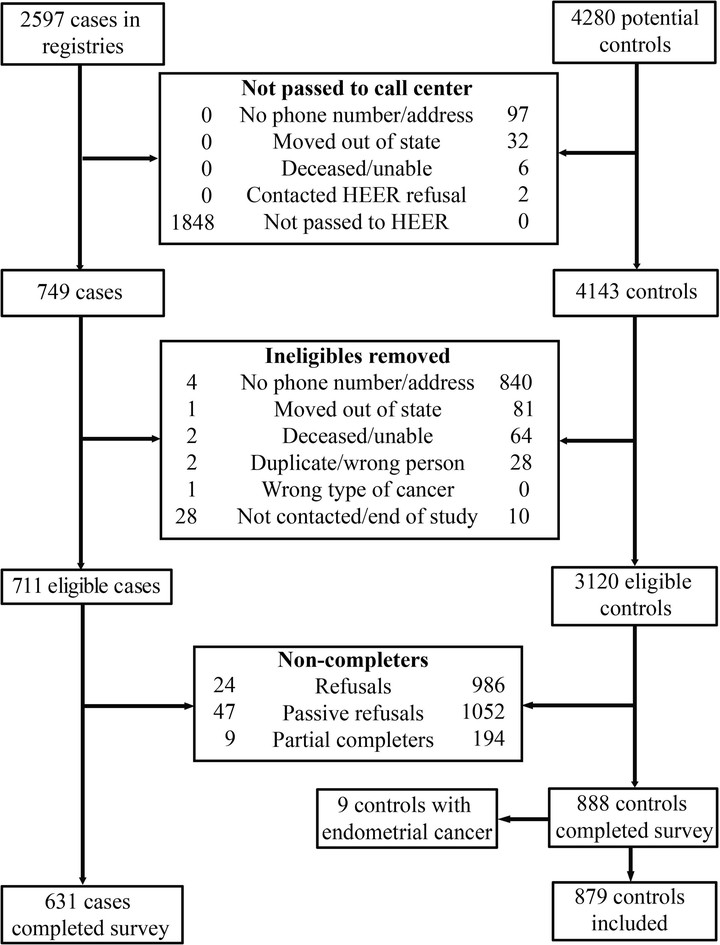Cadmium exposure and endometrial cancer risk: A large midwestern U.S. population-based case-control study

Abstract
Estrogen-mimicking chemicals, such as cadmium, may be associated with increased susceptibility to hormone-dependent cancers, though supporting data are sparse, particularly for endometrial cancer. The Health and Environmental Exposure Research (HEER) study worked with the Arkansas Central Cancer Registry, Iowa Cancer Registry and Missouri Cancer Registry to obtain names of women diagnosed with endometrial cancer who were willing to be contacted for participation in our case control study. Voter registration lists from Iowa and Missouri were used to randomly select similarly aged women as represented in the case population. Participants were interviewed by telephone to obtain information on known or suspected endometrial risk factors. Urine kits were sent to participants for home collection and returned for analysis. Our case-control study consisted of 631 incident cases of endometrial cancer diagnosed from January 2010 to October 2012 and 879 age-matched population-based controls, ages 18-81 years (mean age 65 years). We quantified cadmium amounts in urine and standardized these values through creatinine adjustment. Using data from all survey completers, we developed a multivariable model for endometrial cancer. Creatinine-adjusted cadmium concentration was added to this model. Odds ratio (OR) and 95% confidence intervals (CIs) for endometrial cancer were calculated. After multivariable adjustment, higher creatinine-adjusted cadmium exposure was associated with a statistically significant increase of endometrial cancer risk (OR: 1.22; 95% CI: 1.03-1.44). Our results provide evidence that cadmium may increase the risk of endometrial cancer, possibly through estrogenic effects.